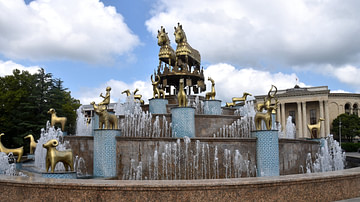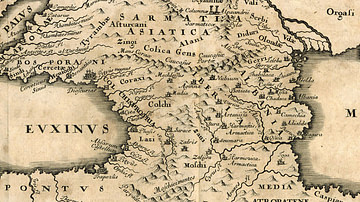Illustration
A map illustrating the Caucasian states after the First Peace of Nisibis in 299 CE depicts a period of geopolitical stability and well-defined borders between the Roman and Sassanid Empires. This treaty, aimed at settling disputes and establishing clear boundaries, brought a temporary respite to the often tumultuous relations in the region. The peace facilitated cultural interactions, encouraging exchanges in language, arts, and technology among the diverse peoples. Local entities, including Lazica, Iberia, and Caucasian Albania, retained autonomy within the established framework, contributing to a complex political landscape.
The Caucasus region emerged as a significant center for the early Christian Church, witnessing the conversion of various local kingdoms. This religious transformation left lasting implications, shaping the cultural and societal fabric of the Caucasus. Despite this, the peace was not permanent, and as the 4th century progressed, the region continued to be a contested zone, experiencing further conflicts and shifts in power dynamics.
About the Author
Cite This Work
APA Style
Netchev, S. (2023, December 21). The Caucasus after the Peace of Nisibis, c. 300 CE. World History Encyclopedia. Retrieved from https://www.worldhistory.org/image/18289/the-caucasus-after-the-peace-of-nisibis-c-300-ce/
Chicago Style
Netchev, Simeon. "The Caucasus after the Peace of Nisibis, c. 300 CE." World History Encyclopedia. Last modified December 21, 2023. https://www.worldhistory.org/image/18289/the-caucasus-after-the-peace-of-nisibis-c-300-ce/.
MLA Style
Netchev, Simeon. "The Caucasus after the Peace of Nisibis, c. 300 CE." World History Encyclopedia. World History Encyclopedia, 21 Dec 2023. Web. 12 Apr 2025.








